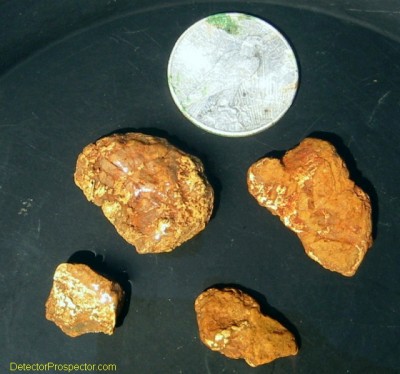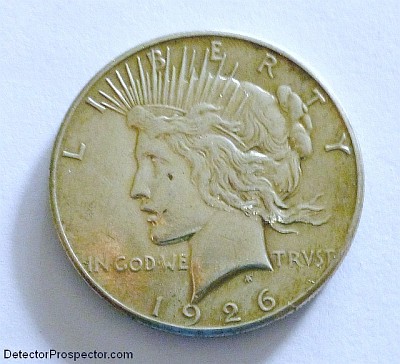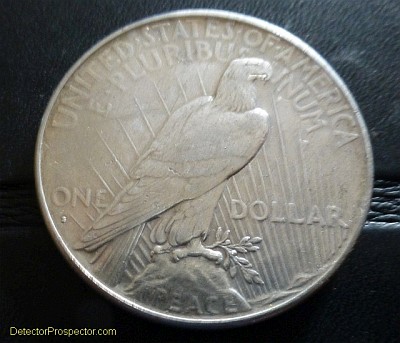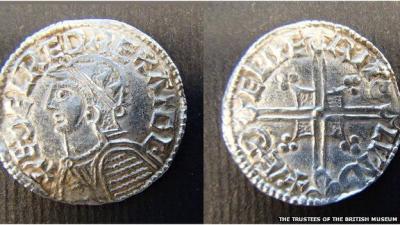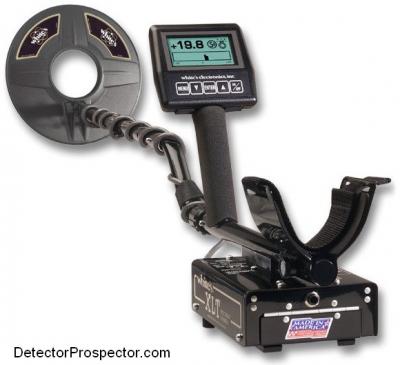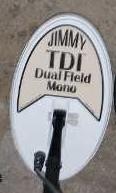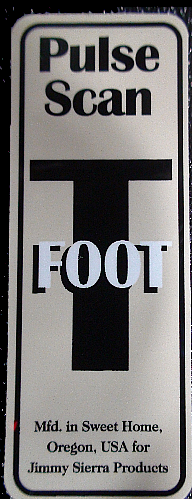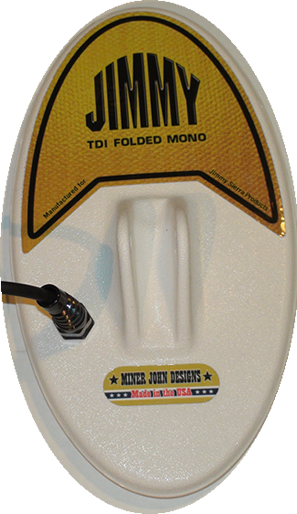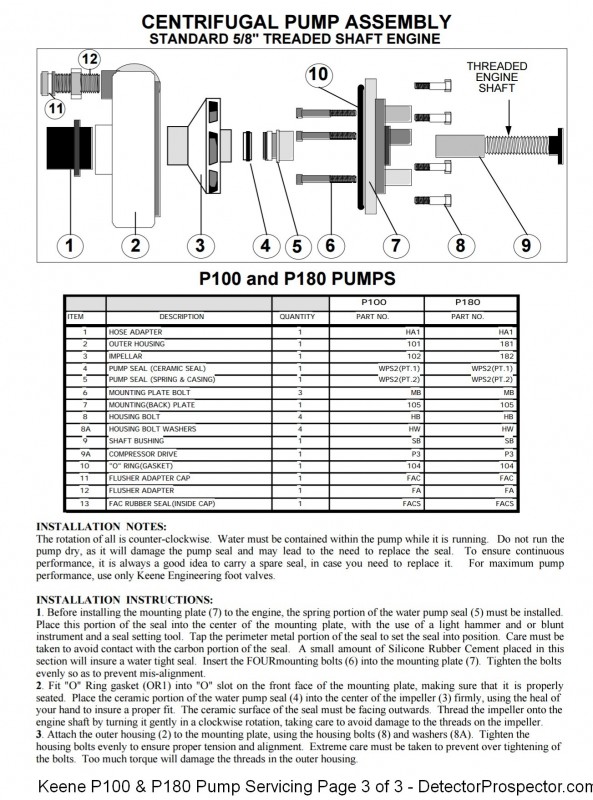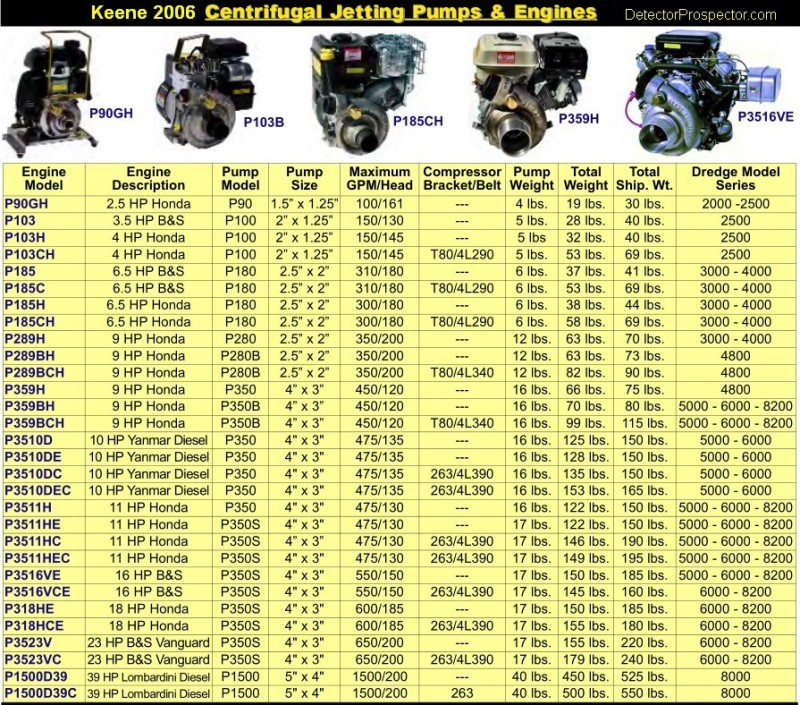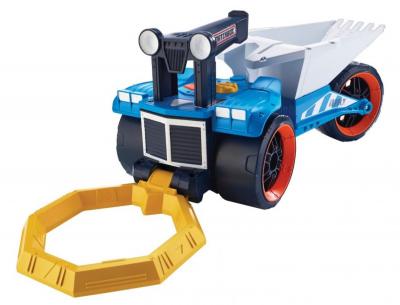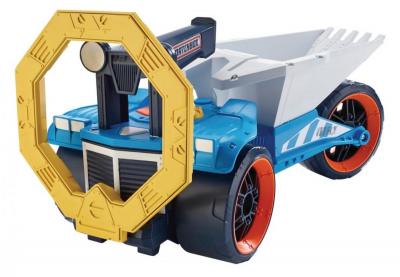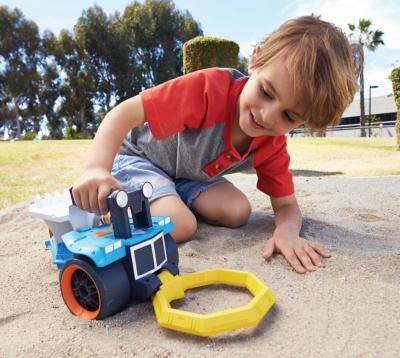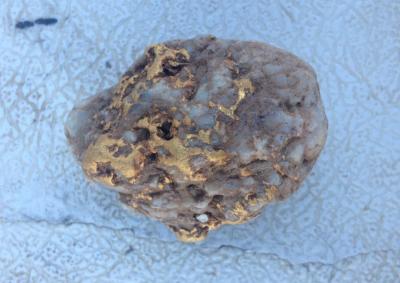-
Posts
19,755 -
Joined
Content Type
Forums
Detector Prospector Home
Detector Database
Downloads
Everything posted by Steve Herschbach
-

Some Things I've Found While Detecting
Steve Herschbach replied to Peteren's topic in Metal Detecting For Coins & Relics
Unlike Monte a couple of my favorite "not gold" finds have come about while looking for gold. In 2002 I was at Ganes Creek, Alaska on a nugget hunt. It was early days before they bulldozed for people and so there was a lot of non-ferrous trash found each day while looking for gold. One day I decided to take a picture of the junk from one day of detecting to show people how many holes got dug for trash. And this is only the non-ferrous. Any bolts, nuts, cans, etc. get dumped in the nearest pond throughout the day. So I take this picture and before I go to toss it a broken grommet in the upper right catches my eye. It is not a grommet at all, but an 1892 Barber Quarter with a hole shot though it! Large caliber at that, which split the coin. Any normal days I would have just dumped that stuff in the trash bin without looking at it, so my taking the photo was fortuitous indeed. One that really did almost get away. I like to imagine that it was all about. A bet or just somebody showing off? The edges of the coin are pounded also, prior to the coin being shot. Just a really interesting find with a White's MXT. Then the next year in 2003 I am wandering the tailing piles of Moore Creek, Alaska with my Minelab GP 3000 and Coiltek 24" x 12" mono coil. Nice day in an area just below what we call 5 ounce flats, for a 5 oz nugget found there. Big gold area and I had big dreams for the day, but I was actually just going hours with almost no targets at all. Not even much trash. I work down a steep slope towards the creek, and there is a small tailing pile next to the water. I hunt it and get a strong low tone and I am thinking, this is going to be a big nugget. Instead, I pull up the only silver dollar I have ever found metal detecting, a 1926 "Peace Dollar", in reasonably good shape after cleaning. I enjoyed that more than a nugget actually. Far more rare in my experience. Even more interesting, a guy named Dennis (buddy of Rob Allison) goes over that pile with a Nugget Finder 25" mono a year or two later, and pulls out a deep 1890's Morgan dollar in great condition. Two silver dollars in one tailing pile makes me think an old miners stash went through the sluice box. Who knows what the riffles actually caught! -

New Land Information Website
Steve Herschbach replied to Gold Seeker's topic in Detector Prospector Forum
I signed up as a claims advantage member, but mainly just to show a little support. -

Million Dollar Hoard Found With XP Deus In Uk
Steve Herschbach replied to Steve Herschbach's topic in XP Metal Detectors
Huge hordes of silver coins, giant gold nuggets, gold coins buried in steel cans; all recent finds that would produce boomer signals that would translate instantly in many minds as trash. -
A hoard of over 5,000 Anglo Saxon coins found in a Buckinghamshire village is the largest discovered since the Treasure Act was introduced in the UK. The coins are in spectacularly good condition, as they were wrapped in a sheet of lead prior to burial. Check out the many great photos at http://www.bbc.com/news/uk-england-beds-bucks-herts-31361054 The coins were found by a 60 year old gentleman participating in a metal detector rally. According to the article at http://www.dailyecho.co.uk/news/13931371.display/ he was receiving interference from another club member and so wandered off in an odd direction with his XP DEUS, only to locate this fabulous find. The value is estimated at over a million pounds placing it easily over a million dollars. I would say his DEUS paid for itself!! And just goes to show, because many people would turn their nose up at an organized club hunt, that in Europe you just never know what thousands of years of history has left in the ground at almost any location. Other finds recorded this year include eight Bronze Age gold bracelets, 19 Viking silver objects including ingots and fragments of arm rings and a Bronze Age gold neck ornament.
-

Coin Hunting Detectors - Good Or Great?
Steve Herschbach replied to gambler's topic in Metal Detecting For Coins & Relics
The only thing the DFX really did for me is I have a Big Foot coil that is made for the DFX or MXT. There is a different version for the XLT. I now have the V3i and the Big Foot works with it but can't say it is any better, and kinda funky with the frequencies. Long story short things got more complicated but can't say they got better, except for those who want to run on salt water beaches. Then the DFX or V3i have an edge in theory at least. I should never, ever discuss old machines I used to have and like. Nostalgia kicks in and I start wanting to track one down! Clean used XLTs can be had for only $200 - $300 bucks. If you shop hard under $200. No doubt about one thing on the V3i though. Easily the most gorgeous color screen ever on a detector. Puts the Minelabs to shame. -

Coin Hunting Detectors - Good Or Great?
Steve Herschbach replied to gambler's topic in Metal Detecting For Coins & Relics
Great post, Monte, thanks! You mentioned what I think was one of the great park hunting machines, the White's XLT. Really ahead of its time, and a real shame White's did not take the concept and head into smaller and lighter units. Instead they went for more complex. I can't really say my DFX was any better per se. And the V3i is just feature overload beyond what most people will ever comprehend. At 6.59 kHz the XLT was running an excellent frequency for coin detecting, and the Signagraph to this day provides what I think is one of the best, most intuitive displays of target information ever made. Just a real sweet, clean operating detector, very good for park coin detecting. -

Video - Spencer Digs Unique GPZ Nugget!
Steve Herschbach replied to Steve Herschbach's topic in Minelab Metal Detectors
Great piece of gold for sure, would fetch a real premium price. Say hi to Spencer if you hear from him. Last time I saw him was digging that huge gold specimen at Moore Creek! http://www.detectorprospector.com/forum/topic/113-why-you-get-a-minelab-dig-big-nuggets-deeper/ -

Minelab's New Website Up And Running
Steve Herschbach replied to Steve Herschbach's topic in Minelab Metal Detectors
Good catch Chris, since this is the Minelab USA site they should change that. -
Minelab has completely redesigned their website - check it out and see what you think. http://www.minelab.com/usa/ Now I need to go on a hunt for broken links!
-

Who Makes TDI Coils For Jimmy Sierra?
Steve Herschbach replied to Hobo's topic in White's Metal Detectors
The Dual Field 6 x 9? That started as a White's labeled coil. Then Jimmy took it over for awhile. I think the story is Dan Guyer at White's made the initial TDI specialty coils. Dan was the White's PI guru. Unfortunately he passed away, and I think that was the end of those coils, and then Jimmy went to Miner John. Could be wrong on that, just vague memory and best guess. -

Coin Hunting Detectors - Good Or Great?
Steve Herschbach replied to gambler's topic in Metal Detecting For Coins & Relics
Great article on hunting park strips... http://kcofortc64.dlinkddns.com/TheAnatomyOfAParkwayStrip.pdf -

Who Makes TDI Coils For Jimmy Sierra?
Steve Herschbach replied to Hobo's topic in White's Metal Detectors
Well, right now I think either White's or Miner John (Razorback). The Jimmy Sierra coils pictured on his website at http://jimmysierra.com/tdi_loops_menuC.html have Miner John stickers on them, except the T-Foot. Not sure about that one. The sticker on it says made in Sweet Home, where White's factory is located. Miner John/Razorback http://razorbackcoils.webs.com/apps/webstore/products/category/655438?page=1 -

Maybe I Am Coachable..
Steve Herschbach replied to indianbullet's topic in Detector Prospector Forum
Beautiful gold. The larger one has great character - congratulations! -

Keene Pump Specs?
Steve Herschbach replied to sjmpainter's topic in Gold Panning, Sluicing, Dredging, Drywashing, Etc
If it is a Keene and input is same as output it is either very old, like 1960s, or has been modified. The older the Keene pumps are, the less efficient, as they were built very loose, so do not expect the old ones to deliver near the power of the newer ones. -

Makro Gold Racer 56 kHz - Coming Soon!
Steve Herschbach replied to Nokta Detectors's topic in Nokta / Makro Metal Detectors
Certainly can be down with lots of digital machines like my V3i, but I like the simplicity of it. It can be used to hunt certain coin ranges, or just left off if extreme high coin readings are an issue. Lots of machines do have presets blocking that area however just for the reason I mention, hot rock and ferrous id wrap. -

Keene Pump Specs?
Steve Herschbach replied to sjmpainter's topic in Gold Panning, Sluicing, Dredging, Drywashing, Etc
And an example parts breakdown. All the threaded shaft models were similar. Big thing to know - shaft is reverse thread. The impeller screws onto the shaft. I sold a few impellers to people who put pullers on them and split the impeller in half! Keene P100 and P180 pump diagram & installation instructions -

Keene Pump Specs?
Steve Herschbach replied to sjmpainter's topic in Gold Panning, Sluicing, Dredging, Drywashing, Etc
Well, still not sure what the specs question is. Almost all Keene pumps for decades used a 3-4HP 5/8" threaded shaft P-100 variant, a 5-6HP 5/8" threaded shaft P-150/P-180 variant, an 8-10HP 1" threaded shaft P-200 variant, and a 11-16HP 1" threaded shaft P-300 variant. In more recent years they really started messing things up by throwing keyway shafts into the mix, making it harder to get correct parts. Someday I am going to put together some historical info on all this that I have in a decent form on my website because it is hard information to make sense out of and not a lot of info available on old stuff. Anyway, here is a 2006 chart to get the ball rolling. Keene 2006 pumps and engines chart -

Keene Pump Specs?
Steve Herschbach replied to sjmpainter's topic in Gold Panning, Sluicing, Dredging, Drywashing, Etc
Simplistically dredges are just a trade between weight/compactness and fine gold recovery. You have to find the balance that works best both for you and your gold deposit. In Alaska for short term operations I preferred light weight and simplicity. But the longer the dredge stays in one location, the less weight matters, and the more important fine gold recovery becomes. A crash box design is nice for simplicity and compactness. However, you use up half the riffles just getting things to settle down. Adding a flare just allows things to settle down before getting to the riffles. But now the whole setup is a third again as long. I don't look at stuff like this as a right way or a wrong way but just trying to figure out what works best for each person and their particular situation. Twin P180 pumps will drive a 6"" did it a lot myself, but it is borderline and so keeping the sluice at waterline is critical to minimizing lift. Every inch of vertical lift robs power fast. -

Keene Pump Specs?
Steve Herschbach replied to sjmpainter's topic in Gold Panning, Sluicing, Dredging, Drywashing, Etc
I will hook you up with specs in the next few hours. Next step up from a subsurface dredge would be a good old fashioned crash box sluice. Next step up would be a flare. I would not bother with the double decker setup personally but that's just me. I like simplicity. -

Makro Gold Racer 56 kHz - Coming Soon!
Steve Herschbach replied to Nokta Detectors's topic in Nokta / Makro Metal Detectors
Hey Paul, would not a Big Foot or Cleansweep type coil be a great thing for Makro/Nokta to make in order to give people even more reasons to consider their machines? I think exploiting all these neglected niche items is the perfect way for a new (to us) company to make inroads. Color me frustrated, Gold Racer in hand and wanting to prove its jewelry hunting capability, and temps hovering around freezing right now. I would like also to see dual ID Filters (discrimination controls). The one we have right now, that turns the disc level up from the bottom. But I want another one that turns the disc down from the top. The first thing this would allow is elimination of ferrous items and hot rocks that wrap around and read as extreme high non-ferrous item, usually high 90s. Better yet though a person could selectively turn downwards on the upper end and upwards on the lower end to chose which "gold region" targets to focus on. Kind of a notch window system but done simply with two variable controls. For me the area above ferrous and below zinc penny is a sweet spot, and above ferrous but below nickel for cherry picking. Something to never forget on the Makro and Racer detectors is the ID Filter comes preset at 10, which by their scale is the top end of the ground reading range. For really gung ho detecting in low mineral ground, specifically white sand or other very low mineral areas, dropping into the range below 10 has possibilities I need to explore more. High gain, low iSAT, and low ID Filter settings are extreme hard core detectorist playthings available on the Gold Racer. -

My New Truck- Mounted Detector
Steve Herschbach replied to vanursepaul's topic in Metal Detector Advice & Comparisons
I think it is obvious that Matchbox has taken metal detecting technology to a whole different level. Once again the major manufacturers are getting caught flat footed while a newcomer shows them how it is really done! The Matchbox Treasure Truck is a rugged, large-scale truck equipped with a real working metal detector, which raises the bar on exploration by taking the hunt below ground. Activate the truck by pushing the antenna down, which will emit a detection signal and once the truck is roving along a surface, the hunt is on. As the Treasure Truck detects metal, the detection signal will change, and the treasure is ready to be dug up! Grab the scoop and dig until the metal is found, using the sifter scoop to separate soil or sand so that only the treasure remains. When the hunt is over, simply raise the antenna to turn off until the next mission begins. Even though the Treasure Truck weighs under two pounds, I appreciated large integrated wheels that allowed me to roll the detector over the surface. The is an important feature for relieving arm strain and possible injury. Better yet is that the Treasure Truck is tuned to find very large coins at shallow depths. I think everyone hates digging deep holes only to find a penny. The Treasure Truck allows you to focus on digging more valuable targets like silver dollars, $20 gold coins, and Rolex watches, all without breaking a sweat digging deep holes. The cleverly integrated digging scoop makes target recovery a snap. Best of all, this breakthrough technology is more affordable than ever before, and available at fine retailers everywhere. In case you were worried about your ability to master this complex technology, I found a child wandering the streets, and he agreed to test this new detector. In minutes he was digging Spanish doubloons, something I have never been able to find in a sandbox with my much more expensive detectors. So simple a child can use it! I seriously can't believe all the time and effort I have wasted digging deep holes for small gold nuggets. I realize now I should focus on finding those shallow one pound and larger nuggets. Thanks Paul for waking me up to the possibilities inherent in this new technology! Matchbox Treasure Truck: Rugged, large-scale Matchbox truck equipped with a real working metal detector Antennae signals when there's metal below Scoop lets the sand fall through so that only treasure remains Works on grass, sand, and dirt Can find coins and metal objects 3'' below surface Uses carbon zinc batteries Can find larger objects up to 1' below surface Multicolor design Less than 2 lbs -

Keene Pump Specs?
Steve Herschbach replied to sjmpainter's topic in Gold Panning, Sluicing, Dredging, Drywashing, Etc
Well, I can tell you pretty much anything you might want to know, but could you narrow the question down a bit? -

3 Ounce Specimen Over 2 Feet Deep With GPZ
Steve Herschbach replied to Steve Herschbach's topic in Detector Prospector Forum

